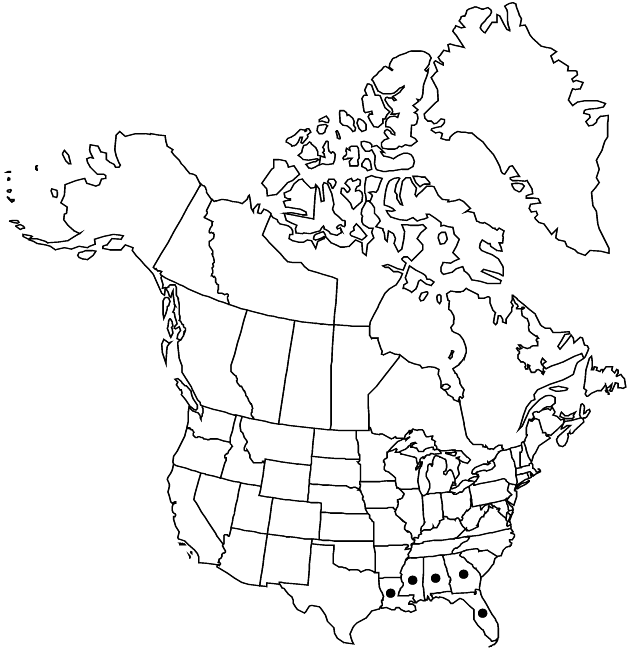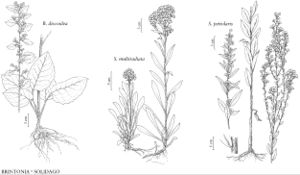Difference between revisions of "Brintonia discoidea"
Erythea 3: 89. 1895.
FNA>Volume Importer |
imported>Volume Importer |
||
| (2 intermediate revisions by 2 users not shown) | |||
| Line 8: | Line 8: | ||
}} | }} | ||
|common_names=Rayless mock goldenrod | |common_names=Rayless mock goldenrod | ||
| + | |special_status={{Treatment/ID/Special_status | ||
| + | |code=F | ||
| + | |label=Illustrated | ||
| + | }}{{Treatment/ID/Special_status | ||
| + | |code=E | ||
| + | |label=Endemic | ||
| + | }} | ||
|basionyms={{Treatment/ID/Basionym | |basionyms={{Treatment/ID/Basionym | ||
|name=Aster discoideus | |name=Aster discoideus | ||
| Line 56: | Line 63: | ||
|publication title=Erythea | |publication title=Erythea | ||
|publication year=1895 | |publication year=1895 | ||
| − | |special status= | + | |special status=Illustrated;Endemic |
| − | |source xml=https:// | + | |source xml=https://bitbucket.org/aafc-mbb/fna-data-curation/src/2e0870ddd59836b60bcf96646a41e87ea5a5943a/coarse_grained_fna_xml/V19-20-21/V20_209.xml |
|tribe=Asteraceae tribe Astereae | |tribe=Asteraceae tribe Astereae | ||
|genus=Brintonia | |genus=Brintonia | ||
Latest revision as of 20:01, 5 November 2020
Stems moderately soft-villous (longest hairs ca. 1 mm), sometimes sparsely proximally. Leaves: basal and proximal cauline: petioles distally winged, 2–8 cm, moderately villous, blades broadly to narrowly ovate, 40–100 × 30–80 mm, bases cordate or attenuate, margins serrate, teeth acuminate, faces abaxially moderately short-strigose, hairs longer on larger nerves, adaxially less short-strigose; mid and distal cauline: petioles reduced distally to 1/4 lengths of blades in arrays, blades similar to proximal, reduced distally to 1 cm. Heads 1–4(–10) per lateral branch; 1–4 proximal branches to 10+ cm. Peduncles shorter than internodes, thin, strigose; bracteoles proximal to heads linear, strigose. Phyllaries: lengths of outer 2 times inner, apices long-acuminate, both faces apically villoso-strigose. Disc floret corollas 4–5 mm, narrow tubes bright green, limbs 50–60% length of corolla, lobes 1.5–2 mm, 75% length of limbs; anthers faintly tinted rose-purple; style branches linear-lanceolate, abaxially hispidulous proximally, otherwise finely papillate, abaxial-marginal stigmatic lines along proximal 2/5. Cypselae golden brown to dark brown, 3–4 mm. 2n = 18.
Phenology: Flowering Aug–Oct.
Habitat: Sandy soils, rich, sometimes swampy woods
Elevation: 10–200 m
Distribution

Ala., Fla., Ga., La., Miss.
Discussion
Brintonia discoidea grows on the Gulf coastal plain east of the Mississippi River and in the extreme southern valley and ridge province in northern Alabama.
Selected References
None.
